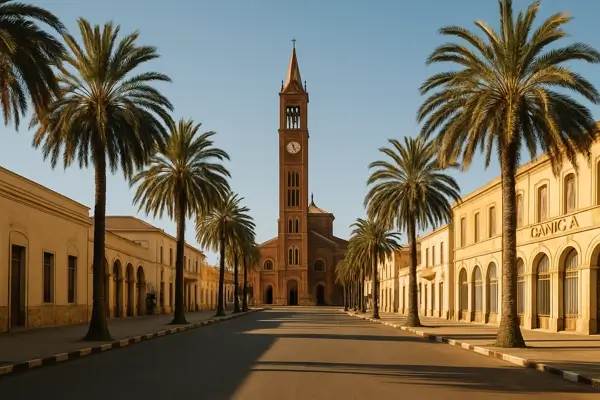
A Country of Strategic Location
Eritrea is located on the Horn of Africa, with a coastline along the Red Sea. Its strategic location has made it an important historical center for trade and a key maritime passage for goods traveling between Europe, Asia, and Africa.
Long Struggle for Independence
Eritrea gained its independence from Ethiopia in 1993 after a 30-year armed struggle, which was one of the longest and most intense independence movements in Africa. The war for independence officially ended in 1991, leading to the establishment of Eritrea as a sovereign nation.
Asmara - The Capital and Cultural Hub
Asmara, the capital city, is known for its well-preserved colonial architecture and vibrant Italian influence. The city features art-deco buildings, wide boulevards, and historic cafes, and is often called the "New York of Africa" due to its architecture and urban layout.
Official Languages
Eritrea has nine official languages, including Tigrinya, Arabic, and English. Tigrinya is the most widely spoken language, while Arabic is used by a significant portion of the population, particularly in religious and cultural contexts.
Diverse Ethnic Groups
Eritrea is a multi-ethnic country, with nine recognized ethnic groups, the largest of which are the Tigrinya, Afar, and Saho. Each group has its unique culture, language, and traditions.
A Legacy of Italian Colonialism
Eritrea was an Italian colony from 1890 to 1941. During this time, the Italians built much of the country's infrastructure, including roads, ports, and buildings. This legacy is still visible in the architecture of Asmara, with many Italian-style cafes, villas, and squares.
Geographical Diversity
Eritrea features a variety of landscapes, including the highlands, lowlands, coastal plains, and deserts. The Danakil Depression, one of the hottest and lowest places on Earth, is located in the eastern part of Eritrea, near the border with Ethiopia.
Religious Diversity
Eritrea is home to a mix of religious beliefs. The majority of the population is Christian, with the Eritrean Orthodox Church being the dominant denomination. There is also a significant Muslim population, particularly in the lowland regions near the coast.
Great Historical Sites
Eritrea is home to several important historical and archaeological sites, including the ancient city of Qohaito, which was a major center of the Aksumite Kingdom. It also has UNESCO World Heritage Sites, like the Asmara Art Deco District and Massawa, a historical port city.
Natural Beauty and National Parks
Eritrea is home to several beautiful landscapes and protected areas. The Dahlak Archipelago is a popular tourist destination, known for its crystal-clear waters, coral reefs, and rich marine life. The country also has various mountain ranges, desert landscapes, and wildlife reserves.
